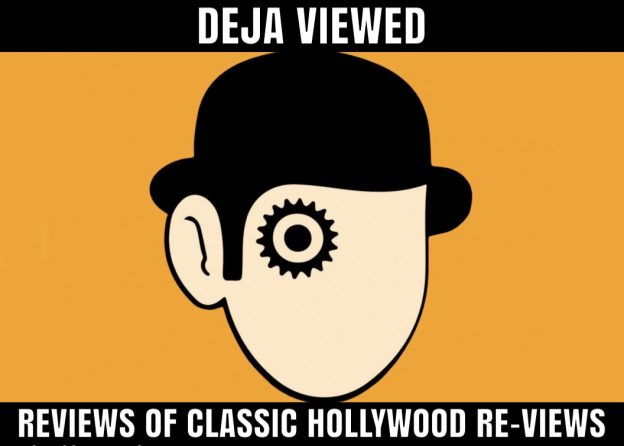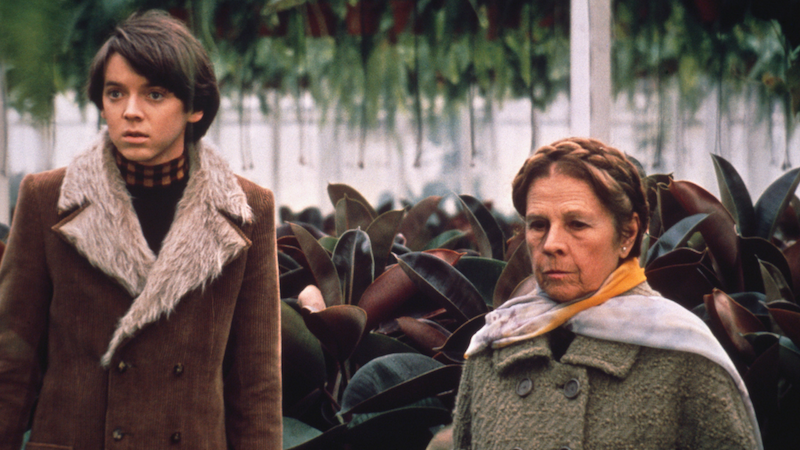

Deja Viewed: Harold and Maude

Harold and Maude feels like a movie made on Opposite Day.
It’s a May-December romance, but in the reverse order of most Hollywood love stories. The stars look as un-cinematic as stars get (read: like normal people). It features one of the greatest movie soundtracks ever produced — which was never commercially released.
From the opening scene, in which we see a young man methodically hang himself while his unconcerned mother bustles past his swinging body, it’s clear: We aren’t in regular romcom territory.
The very-much-alive body belongs to Harold (Bud Cort), a college-aged kid obsessed with death, fake suicides and getting under the skin of his unflappable mother (VivianPickles).
During one of his routine drop-ins of a stranger’s funeral, Harold meets Maude (Ruth Gordon) a 79-year-old also intrigued with the macabre. But where Harold sees funerals as suicide dry-runs, Maude sees them as life’s lily pads, springing her into seize-the-day adventures.
Director Hal Ashby balances fairy tale absurdities with a sincere love story between perhaps the most unlikely couple in cinema history: Maude is a fiesty Holocaust survivor who inhabits a gentle universe that abides her casual car thefts; Harold is a lonely teen who drives a modded hearse.
Ashby jolts the film with overlapping sound, oversaturated color and an underrated soundtrack — a Graduate-level gem by Cat Stevens, now Yusuf Islam. Unlike The Graduate, (which this film subtly subverts), the soundtrack was never released. Thankfully, the nine-song, 29-minute playlist is eminently streamable.
As we bound from bad date to good, from death to life, from privileged suburbia to Vietnam-era nihilism, it’s easy to forget that the film, now more than 50 years old, was as far ahead of its time as his other cult hit, 1979’s Being There.
Here, Harold is lost in the computer dating world. Maude practices mindful meditation. Ashby wields Lynchian absurdities before that was a term. And were it not for its cult-film bonafides, Harold and Maude features a twist ending that would be called Shyamalan-ian today.
Make no mistake: this is an oddball movie that lives on eccentricities and an outsider worldview. The symbolism of Harold’s “deaths” have divided diehards for more than a half century over whether the film is a counter-culture statement or poem urging viewers to make every breath count.
Either way, the viewer wins. It may pose as a comedy about staging death, but Harold and Maude ultimately says something profound about rehearsing life.

Befriending The Voice in the Back of Your Head
I don’t know about yours, but the voice in the back of my head can be a real asshole.
You should eat eat better, it scolds.
You could exercise more, it reminds.
You blew that, it laments.
They’re not gonna like you — or it, it predicts.
Are you going to take that personal affront? it demands to know (it also has an ego, temper and pettiness).
The Voice In The Back Of Your Head is always chanting a variation of a one-note tune: You could do better. It taunts me for my fears and weaknesses — with my fears and weaknesses.
Ask yourself: If your VITBOYH were a person, would you be friends on Facebook with that person? Befriend that person? Would you advise a relative to?
I’m not sure I would, which is a problem. Because there is no evicting a VITBOYH. Consider it your Dark Matter Twin, with permanent squatters right. A roommate who has read all your emails, talked shit about you, but can never be ratted out to the landlord because YOUR name is on the lease.
So I’m taking a new approach. I’m trying to befriend the voice in the back of my head. After all, it may be an incessant nag, but it says it to my face and truly wants what is best for me. All VITBOYHs deserve at least that much benefit of the doubt.
The first step of the Internal Witness Protection Program is choosing a pseudonym. I keep landing on Wilbur. I think of an impulsive, frightened, judgmental soul when I think of a Wilbur, which photocopies my darkest insecurities. Plus I like the “will burr” imagery.
That first step is important. It takes the voice from inside your skull and places it into an external headspace, if you will. It’s a lot easier to say “Wilbur is being an insufferable ass today” than concede that I am. But any name works, including “Vit Boy.”
Next is giving it a face. This, too, is important. I recommend positive imagery for this one, because here is where we begin to change the tenor of the narrative. Perhaps a child or parent. I picture Jadie.
Finally, the voice. This is the critical part.
Listen to what your Vit Boy is saying. Picture the words coming coming from your beloved’s mouth. What is the tone of that message?
When I do it right, Wilbur is a lot more patient with me than I am. Supportive, too. He’s more likely to say You tried your damndest before Your best didn’t do.
Funny what putting a kind face does to a thing.
More importantly, I’m finding a Wilbur to be honest — in a constructive way. He admits there are only two things that a Voice In The Back Of Your Head can tell you: What you know to be true; and what you want to be true.
When I do it right, I can tell that difference, too.
Now if he’d just quit telling me to buy so many goddamned magic tricks.
